
Use Cases for Electric Propulsion
Lunar Launch
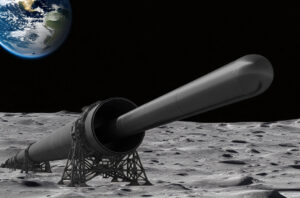
The moon’s shallow gravity well means exit velocities with as little as 1.7 km/s are sufficient for launch to orbit. Slightly more, and you can deliver raw materials anywhere in the solar system. Engineering difficulties grow exponentially with launch velocity, so it is hard to overstate the advantage of low orbital velocity over Earth, where orbital velocities of nearly 8 km/s are required.
Further, the moon’s ever-present vacuum and abundant sunshine for solar electric power greatly enable this low-cost launch technology.
NASA and others are committed to returning to the moon; this means commercialization is necessary. An enormous market need for raw materials (water, fuel, metals, and oxygen) on lunar and Earth orbits, at Lagrange points, and for Mars settlement is projected. Our launching technology is synergistic with early investments in lunar mining and in situ materials processing.
Earth Launch
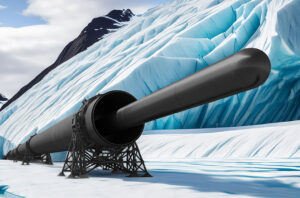
Earth launch was the original application for electromagnetic launch. Long before we understood the pitfalls of previous approaches and the opportunity to use high-temperature superconductors, Earth launch was the focus.
It will require a small “third stage” rocket motor for additional delta V and to overcome atmospheric drag. This is true both because acceleration to higher orbital velocities is geometrically harder and because the launch of orbital velocity cargo without control for circularization and final delta V in an ever-more-crowded Earth orbit is unthinkable.
Such a system would operate at costs of just a few dollars per pound to orbit for raw materials, transforming the space industry. The key economic drivers are high yearly tonnage, robust low-maintenance operation, delivery cylinders made of useful materials on orbit (upcycled or recycled), and low cost or return of reusable small third-stage rocket motors.
Asteroid Mining Raw Materials Transfer

To state the obvious, these materials, free as they may be, are there, not here. And it will be a very long time before remote deep space mining technology can begin to tap these resources. Still, when that time comes, raw materials will need to be moved from where they are to where they are wanted. In space, that means Delta V and orbital mechanics and, above all else, economics. Powered by small nuclear reactors or possibly solar, HST-based mass drivers will be the economic champs.
Launch from Orbit (Planets, Moons, and Lagrange Points)
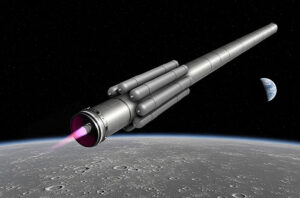
In addition to thrustors for orientation, an orbital system could be supported by a small, long-firing, heavy-duty impulse motor designed to stay in place. Such an impulse motor could take many forms, but the economic benefit derives from the fact that it stays in place, rather than departing with each shipment, and can be as heavy-duty as is needed, both to operate super efficiently and without refurbishment or repair.
The use of electric propulsion at a Lagrange point is an interesting exception to the planetary and lunar orbital analysis above. That is, with no physical body at the center of a shallow Lagrange point, an object doesn’t really “orbit”; instead, it follows a large halo looping path at this equilibrium point between the Sun and Earth. It is conceivable that a launch tube could reorient and then adjust the exit velocity for delta V as needed for various launch windows. Powered by an SMR or possibly solar, such a system could enable the use of Lagrange points in multiple new ways.
Defense and HYPERSONIC TESTING
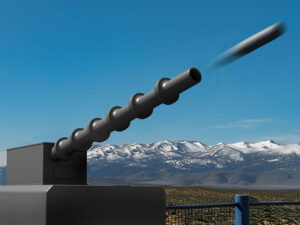
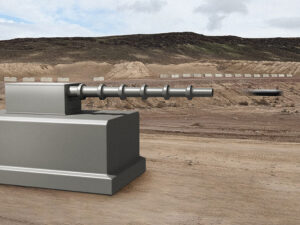
Defense was the first use case for electromagnetic launch efforts. Early on, the defense department recognized that chemical propellants had reached their limits and started the first rail gun research efforts. This research was accelerated by President Reagan’s Strategic Defense Initiative, a.k.a. Star Wars. While rail gun efforts did not prove fruitful, much was learned.
The inherent benefits of an electromagnetic approach remain true today.
- Greater muzzle velocity = greater range
- Explosive propellant transport is a leading DoD logistical and safety challenge
- Proprietary high-efficiency Electromagnetic Launch, Inc. design supports rapid-fire capability
- Provides cost-effective hypersonic in-air testing without wind tunnels
- EML enables low-cost gun-based defense for mass drone and missile attacks

